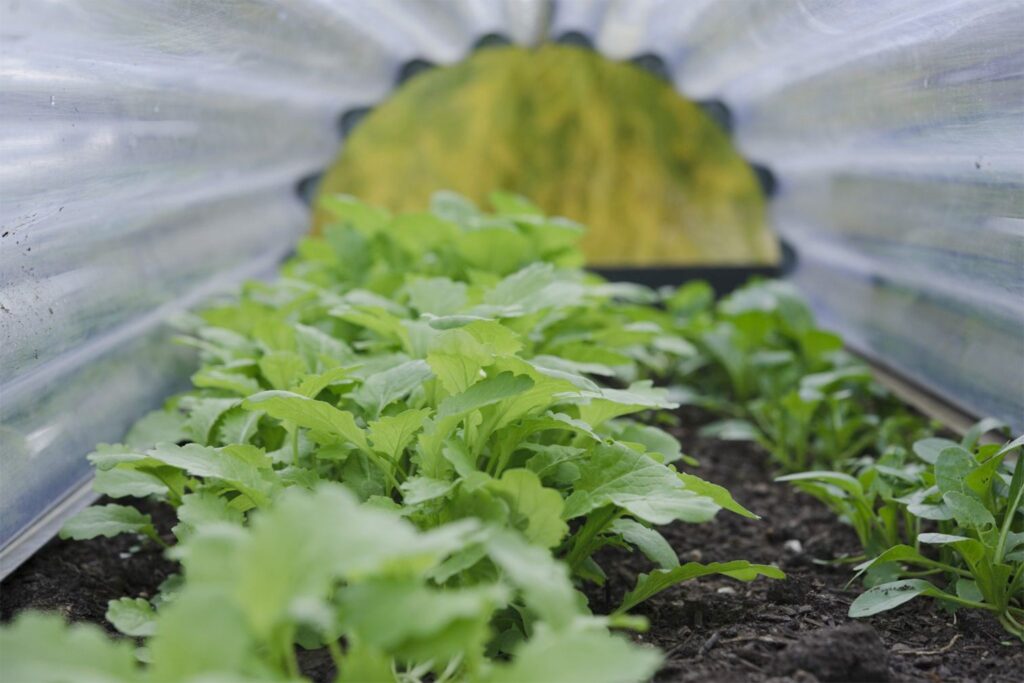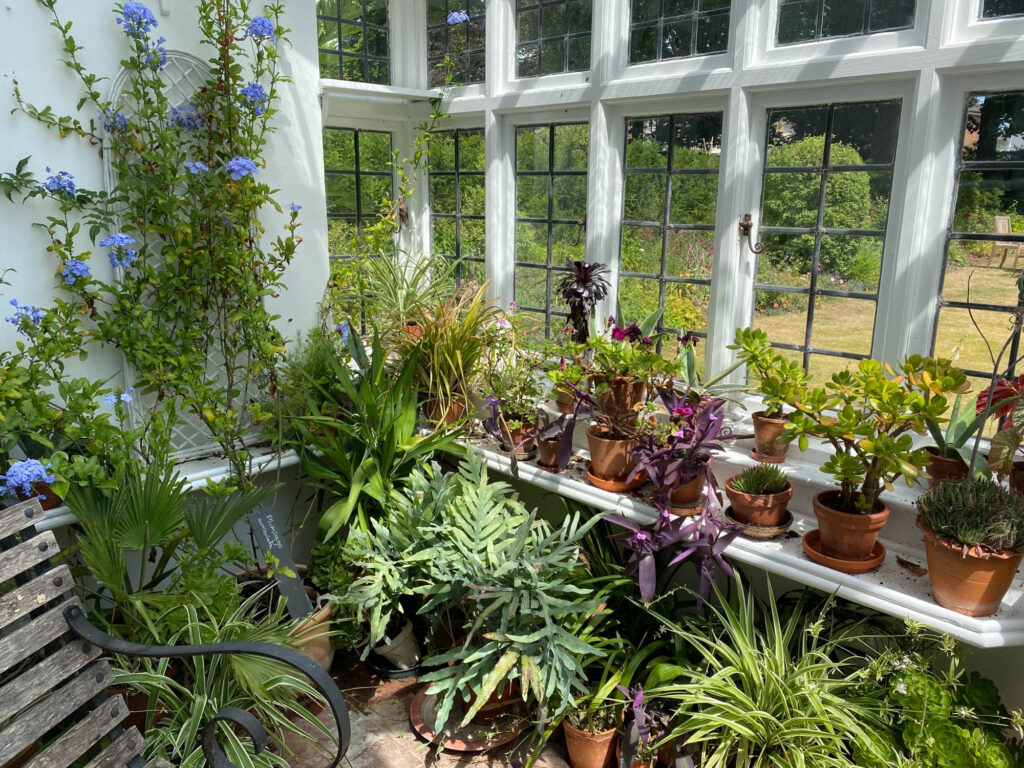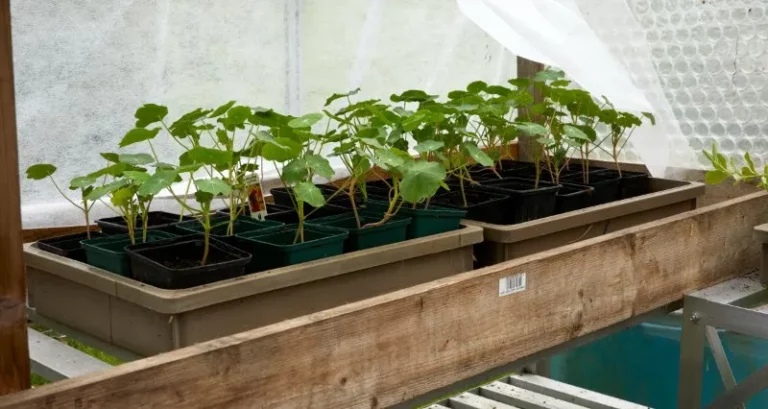It’s early spring, and the air still carries a chill from the winter that’s slowly loosening its grip. You’re standing in your garden, eager to kickstart your gardening season, but you’re well aware of the unpredictable weather that can easily spell doom for your delicate plants. This is where your unheated greenhouse comes to the rescue.
In my own gardening journey, I’ve often found myself wondering about the perfect moment to transfer my tender seedlings and cherished plants into the sanctuary of my unheated greenhouse
The approximate time for putting plants in an unheated greenhouse typically falls in the late winter to early spring months but depends on several factors, including your local climate, the type of plants you want to grow, and the specific conditions inside your greenhouse.
In this guide, we’ll delve into the art and science of determining when you can safely put plants in your unheated greenhouse.So, let’s dig in and unveil the secrets to a thriving greenhouse garden.
What are the key considerations for determining the optimal time to transfer plants into an unheated greenhouse?

Local Climate: Your local climate is a crucial factor in determining when you can start using an unheated greenhouse. If you live in a region with cold winters and late spring frosts, you’ll need to wait until the risk of frost has passed before moving plants into the greenhouse. You can check historical weather data or consult with local gardening experts to get a better idea of your area’s frost dates.
Plant Types: Different plants have different temperature requirements. Some cold-hardy vegetables and herbs can tolerate cooler temperatures and may be planted in an unheated greenhouse earlier in the season. Tender or heat-loving plants, on the other hand, may need to wait until the weather warms up significantly before being moved into the greenhouse.
Greenhouse Temperature: An unheated greenhouse will naturally be warmer than the outside environment during the day due to solar heating, but it can still get quite cold at night, especially early in the season.
Further, you should monitor the temperature inside the greenhouse and ensure it doesn’t drop too low for your plants. You can use tools like a thermometer or a temperature-controlled venting system to help regulate the temperature.
Frost Protection: Even unexpected cold snaps or frost events can occur. Be prepared to provide additional protection for your plants on colder nights, such as using frost blankets, row covers, or portable heaters if necessary.
Seedlings vs. Established Plants: Seedlings and young plants are often more sensitive to cold temperatures than mature, established plants. You may need to wait longer to move tender seedlings into the greenhouse compared to more mature plants.
Hardening Off: If you’re starting plants from seed indoors or in a warmer environment, it’s essential to gradually acclimate them to the cooler conditions. This process, known as “hardening off,” helps plants adjust to the lower temperatures and fluctuating conditions in the greenhouse.
What is the ideal temperature for an unheated greenhouse to start planting?
- Cold-hardy vegetables and herbs can be planted when daytime temperatures inside the greenhouse reach around 40-45°F (4-7°C), typically when the temperature is consistently above freezing at 32°F (0°C).
- Cool-season crops, such as carrots and beets, are suited for planting when greenhouse temperatures are consistently above freezing but closer to 40°F (4°C).
- Tender vegetables and flowers, like tomatoes and peppers, require temperatures of at least 50-55°F (10-13°C) for successful growth.
- Tropical or heat-loving plants often need even higher temperatures, typically above 60-70°F (15-21°C).
How to set up plants in an unheated greenhouse?
Choose a Suitable Location:
- Select a location that receives ample sunlight, preferably south-facing or with maximum exposure to sunlight throughout the day.
- Ensure good drainage to prevent waterlogging.
Assemble the Greenhouse:
- Depending on the type of greenhouse (e.g., cold frame, hoop house, or small greenhouse kit), follow the manufacturer’s instructions to assemble the structure.
- Make sure it is securely anchored to the ground or foundation.
Install Ventilation:
- Set up roof vents or side vents to provide proper airflow and prevent overheating during sunny days.
- Consider using an automatic vent opener that responds to temperature changes.
Choose Suitable Shelving or Benches:
- Install shelving, benches, or tables for organizing and displaying your plants.
- Ensure they are sturdy and maximize space utilization.
Prepare the Soil:
- Prepare the soil or potting mix in containers or raised beds inside the greenhouse.
- Ensure good drainage and proper soil quality based on the needs of the plants you intend to grow.
Planting:
- Start with cold-hardy vegetables and herbs when temperatures inside the greenhouse consistently stay above freezing (around 32°F or 0°C). You can plant these when daytime temperatures inside the greenhouse reach around 40-45°F (4-7°C).
- Plant cool-season crops like carrots and beets when temperatures are consistently above freezing but closer to 40°F (4°C).
- Wait until greenhouse temperatures are consistently above 50-55°F (10-13°C) to plant tender vegetables and flowers.
- Tropical or heat-loving plants typically require temperatures above 60-70°F (15-21°C).
Watering and Monitoring:
- Set up a watering system or use hoses and watering cans to keep plants adequately hydrated.
- Regularly monitor soil moisture, temperature, and humidity levels inside the greenhouse.
- Adjust watering and ventilation as needed to maintain optimal growing conditions.
Insulation and Frost Protection:
- Use bubble wrap, horticultural fleece, or row cover to insulate the greenhouse during colder nights.
- Be prepared with frost blankets or additional protection for plants when unexpected frost is forecasted.
Pest and Disease Management:
- Implement preventive measures such as sticky traps and regular inspections to deter pests.
- Address any signs of disease promptly.
Maintain and Clean:
- Regularly clean the greenhouse to prevent algae growth and maintain clarity in the covering material.
- Check for any damage or wear and make necessary repairs.
can you cultivate anything in an unheated greenhouse during winter?
In short, yes, you can, but there are constraints. Without a heat source, your possibilities are limited by the onset of severe cold. To extend your growing season as much as possible, consider three key strategies:
Choose Cold-Tolerant Plants: Opt for plant varieties that can withstand colder temperatures.
Utilize Frost Fabric and Row Covers: Employ protective measures like frost fabric and row covers to shield your plants from freezing conditions.
Explore Passive Solar Techniques: Investigate passive solar methods to harness the sun’s energy and create a warmer microclimate within your greenhouse.
Is it feasible to cultivate vegetables in an unheated greenhouse during the winter months?

Before you embark on this endeavor, it’s important to temper your expectations, especially when facing extreme cold, as temperatures plummeting to -30 degrees Celsius often signal the end of the winter vegetable growing season.
However, certain vegetables exhibit resilience to milder cold spells, making them suitable candidates for winter greenhouse cultivation. These cold-tolerant vegetables include:
- Kale
- Spinach
- Radishes
- Carrots
- Beets
- Arugula
- Asian Greens
- Collard Greens
- Lettuce
Furthermore, to protect these cold-hardy vegetables from freezing conditions, consider covering them with frost fabric and/or plastic row covers. These measures help retain heat within the greenhouse and can sustain your vegetables until temperatures dip to approximately -10 to -15 degrees Celsius.
Also, if you’ve successfully kept vegetables alive in even colder temperatures without supplemental heat, your insights would be greatly appreciated and can be shared in the comments section.
For those seeking to maximize heat retention in their unheated greenhouse through cost-effective means, one strategy is to employ a rudimentary passive solar method involving an old milk jug or similar plastic container painted black and filled with water.
While I haven’t personally experimented with this method, its potential to contribute additional warmth to your greenhouse during overnight hours holds promise. I plan to explore this approach in the upcoming spring and will update this post with my findings.
FAQ
1.Do plants in an unheated greenhouse need to be hardened off?
Yes, plants in an unheated greenhouse should still be hardened off before transplanting them outside. Gradually expose them to outdoor conditions to acclimate.
2.What grows best in an unheated greenhouse?
Cold-hardy vegetables like lettuce, kale, and spinach, as well as some herbs and cool-season flowers, thrive in unheated greenhouses.
3. What is the purpose of an unheated greenhouse?
An unheated greenhouse extends the growing season, protects plants from frost, and creates a controlled environment for cultivating crops in cooler climates.
4.Can I start seeds in an unheated greenhouse?
Yes, you can start seeds in an unheated greenhouse, but timing and temperature management are crucial to ensure successful germination and growth.
5.Will seeds germinate in an unheated greenhouse?
Seeds can germinate in an unheated greenhouse, but it depends on the plant species and the local climate. Adequate temperature and moisture control are essential for successful germination.
Conclusion:
In a nutshell, when I decide to move plants into my unheated greenhouse, I consider a few key things. Typically, it’s late winter to early spring, but I look at my local weather and wait until late frosts are unlikely. I also think about the kinds of plants I want to grow; some can handle the cold, while others need it warmer.
Further, i keep a close eye on the greenhouse temperature with a thermometer and use things like frost blankets if it gets too cold unexpectedly. Younger plants are more sensitive, so I might wait a bit to move them in.
Lastly, I remember to “harden off” plants gradually if I started them in a warmer place. So, it’s all about balancing these factors to give my plants the best shot at thriving in the unheated greenhouse.

